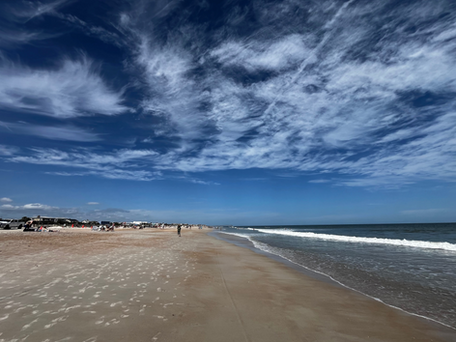- uniquejt
Return to St. Augustine, Florida
We had an opportunity to return for two days while staying at the Royal St. Augustine Golf and Country Club facility through our Harvest Host membership. Our first stop was where America began.

Built in 1672 by the Spanish over an approximate thirty year period, the fort sought to secure St. Augustine from invading forces from the water and land. Soldiers used the fort to fire cannons over the river. Castillo de San Marcos National Monument preserves the oldest masonry fortification in the continental United States.

It was designed by the Spanish engineer Ignacio Daza, with construction beginning 107 years after the city's founding by Spanish Admiral and conquistador Pedro Menéndez de Avilés, when Florida was part of the Spanish Empire. The fort's construction was ordered by Governor Francisco de la Guerra y de la Vega after a raid by the English privateer Robert Searles in 1668 that destroyed much of St. Augustine and damaged the existing wooden fort. Work proceeded under the administration of Guerra's successor, Manuel de Cendoya in 1671, and the first coquina stones were laid in 1672. Coquina is a type of limestone rock made of shells and sand cemented together. The construction of the core of the current fortress was completed in 1695, although it would undergo many alterations and renovations over the centuries.
We missed the fort the first time we visited St. Augustine last year, so we were very happy to get to experience it on this trip. Our second planned stop was a visit to Flagler College..

Founded in 1968, the Flagler campus comprises 19 acres, the centerpiece of which is the Ponce de León Hotel, built in 1888 as a luxury hotel. The architects were John Carrere and Thomas Hastings, working for Henry Morrison Flagler, the industrialist, oil magnate and railroad pioneer. It is now listed as a National Historic Landmark.
Flagler College has received many top state and national rankings over the years. In 2022, Veranda named the campus "One of the Most Beautiful College Campuses Around the World," and mentioned its palatial, renovated ballroom with walls of original Tiffany stained glass windows. The ballroom now serves as the dining hall for students. The same year, Architectural Digest mentioned its buildings in "One of the 8 Most Unexpected Places to See World-Class Architecture in the U.S."
Unfortunately, all the tours for the day were sold out so we missed out seeing the highlight of their tour in the dining hall. When classes are in session, students crisscross through lavish halls, loggias and gardens, walk under the elaborate murals of the Rotunda, and attend lectures in the Flagler Room and Solarium. Most remarkable of all, they have their meals in the original 3 ½ story, oval Dining Hall, in which jeweled light streaming through 79 Louis Comfort Tiffany stained-glass windows casts a beautiful glow on hand-painted murals on the walls and ceiling. The image below is courtesy of Wikipedia.

How much are Flagler College Tiffany windows worth?
APPRAISER: Because they're repetitive designs and they came in multiples, they would range in price from about $5,000 per window to $45,000 per window, and it really depends on the size, the condition and the provenance. By the way, they are protected outside with thick plexiglass panels.
From the college we drove out to the St. Augustine Light Station then continued on south for a late lunch at the Beachcomber restaurant where "A Street meets the Beach".























